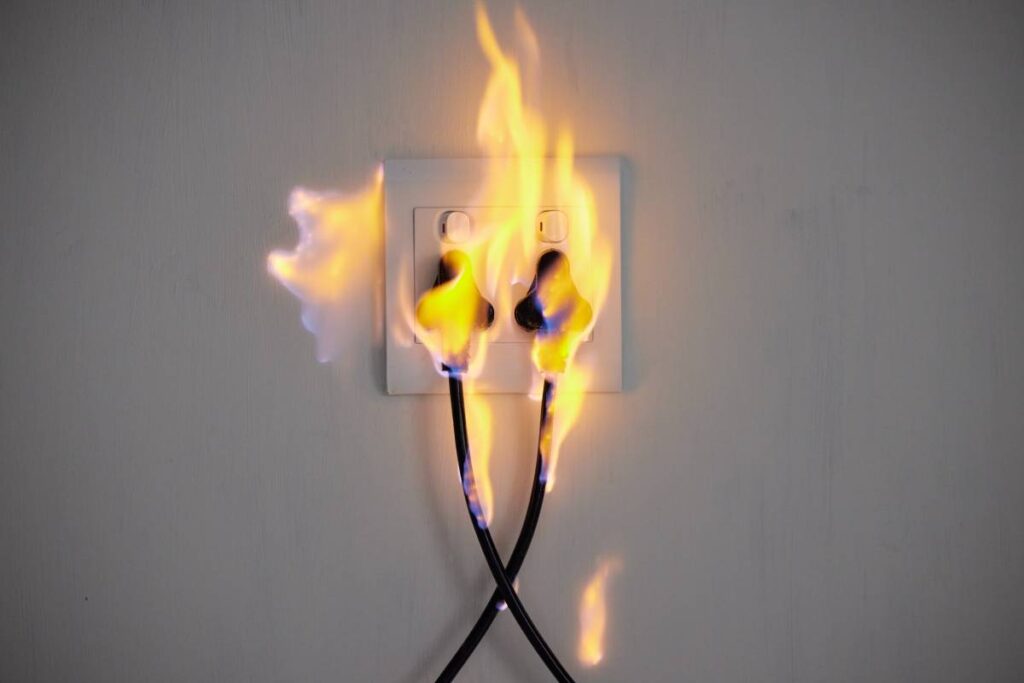Fire safety is very important for every workplace. Fires can happen suddenly and spread fast. They can hurt people and cause big damage to buildings and equipment. Knowing why fire safety matters and how to prevent fires can save lives and protect the business.
This article will explain why fire safety is important, the best ways to keep workplaces safe, and the five simple steps every business should follow. Whether you work at a company or just visit, understanding fire safety helps keep everyone safe.
Why Fire Safety Is Important
Fire safety is more than just following rules. It protects people, buildings, and the business’s future. Being careful helps stop accidents. When a fire happens, being ready helps everyone stay safe.
Protecting People
The most important reason to focus on safety is to protect people. Fires spread very fast and can cause serious injuries or death.
Without alarms or a clear plan, people might not know when to leave or where to go. A good safety plan helps everyone escape safely.
Protecting Property
Fires can quickly destroy buildings, machines, furniture, and important papers. Tools like smoke detectors and fire extinguishers help find and stop fires early. This saves money and keeps the workplace ready.
Following the Law
Many countries have rules about fire safety. Businesses must follow these rules or face fines or trouble. The rules ask for clear exits, alarms, training, and fire drills. Following them shows the company cares about safety.
Keeping Business Running
A fire can stop work for days, weeks, or even close a business for good. Good fire safety lowers the chance of big fires and helps work go on. This means less money lost and fewer problems for everyone.
Building Trust
Workers feel safer when they know the company cares about them. When everyone knows what to do in a fire, they stay calm and help each other. This makes teams stronger and work better.
Best Practices for Fire Safety in the Workplace
Fire safety doesn’t happen by chance. It takes good planning and action. Everyone needs to follow the plan and stay watchful. Here are the best ways to keep a workplace safe from fire:
1. Fire Risk Assessment
A fire risk assessment means looking carefully around the workplace to find anything that could start a fire or make a fire worse. Some examples include:
- Electrical equipment that could cause sparks
- Flammable materials like paper, fuel, or chemicals
- Areas where people might be at risk, like isolated rooms or busy visitor areas
- Vaping devices and their charging equipment should be included in this assessment due to potential battery hazards
2. Fire Detection and Alarm Systems
Early warning is very important. Put smoke detectors and fire alarms in all parts of the building, especially kitchens, storage rooms, and near electrical equipment. Check alarms often to make sure they work. Early warning gives people more time to stay safe.
3. Fire-Fighting Equipment
Keep fire extinguishers, fire blankets, and sprinklers ready and easy to find. Make sure workers know how to use them safely and only when it’s safe. Training helps everyone feel ready to stop small fires before they get worse.
4. Fire Evacuation Plan
Make a clear plan showing how to leave the building if there is a fire. The plan should have clear exits, safe meeting spots outside, and who helps who. Practicing the plan helps everyone know what to do in an emergency.
- Marked escape routes and emergency exits that are always clear
- Safe meeting points outside the building
- A method to check that everyone is out safely
Practice this plan regularly with fire drills so everyone knows what to do.
5. Fire Safety Training
Train all employees about fire safety. Teach them:
- How to raise the alarm quickly
- How to use fire safety equipment
- How to evacuate safely and calmly
- What to do if they need help or cannot use stairs
Give new employees fire safety training when they start working, and repeat the training regularly for all staff.

6. Keep Work Areas Clean and Safe
Clutter and trash can make fires worse. Make sure all flammable items are stored safely away from heat sources. Avoid overloading power sockets and dispose of waste properly.
7. Fire Wardens
Assign some employees to be fire wardens. Their job is to help during a fire emergency. They check rooms, help with evacuation, and communicate with emergency services if needed.
8. Regular Checks and Maintenance
Fire safety equipment, alarms, and electrical wiring need to be checked regularly by professionals. Fix any problems quickly to keep everything working in an emergency.
The Five Steps of Fire Safety
Fire safety can be broken down into five important steps. These steps help keep fire safety organized and easy to follow.
Step 1: Identify Fire Hazards
Look for anything in the workplace that could start a fire. Common hazards include:
- Faulty electrical wiring or equipment
- Heating devices that get very hot
- Flammable liquids and materials like fuel or cleaning chemicals
- Cooking equipment in kitchens
Step 2: Identify People at Risk
Think about who could be in danger during a fire. This includes:
- Workers who work alone or in isolated areas
- Visitors who do not know the building well
- People with disabilities or limited ability to move

Step 3: Evaluate and Reduce Risks
Look at the risks and decide how to make them smaller. For example:
- Keep flammable materials far from heat sources
- Repair broken or faulty electrical equipment
- Improve air flow in places with chemicals
Step 4: Record, Plan, and Train
Write down what you find in your fire risk assessment and your fire safety plan. Make sure your plan includes:
- Escape routes and clear signs
- Fire alarms and equipment locations
- Staff roles and who is responsible for what
- How often fire drills will happen
Step 5: Review and Update
Plans should be reviewed at least once a year. Also review after big changes in the workplace, like new equipment or building changes. Update the plan if needed to keep it current.
Summary
Safety in the workplace is very important to protect lives, property, and business operations. The best practices include finding risks, installing alarms, training employees, and having a clear evacuation plan.
By following the five key steps, businesses can lower risks and be ready to act quickly if an emergency happens. No one wants to face a fire, but preparing for it can save lives and prevent serious damage. Start today by making safety a priority in your workplace.





